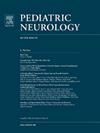Impact of CLN3 Disease on Child Quality of Life and Family Function
IF 2.1
3区 医学
Q2 CLINICAL NEUROLOGY
引用次数: 0
Abstract
Background
CLN3 disease is a rare inherited neurodegenerative disease that typically starts in childhood. Given the progressive nature of the disease, it likely affects the health-related quality of life (HRQOL) of both the child and the family unit. In this study, we evaluated HRQOL and family function in individuals with CLN3 disease and their families.
Methods
Data were obtained from longitudinal observational studies on CLN3 disease at the University of Rochester Batten Center. Assessments were completed at variable intervals from 2006 to 2024. Parents completed the PedsQL, which assesses child HRQOL, and the PedsQL FIM, which assess family impact. In a subset of participants, we concurrently administered the Unified Batten Disease Rating Scale, a global assessment of CLN3 disease.
Results
Data from 71 participants were included in this study, of which 21 participants had concurrent Unified Batten Disease Rating Scale data. Mean (SD) PedsQL Total (48.2 (19.7)) and PedsQL FIM Total (51.2 [16.5]) scores were low. Worse child HRQOL was associated with physical impairment from more severe CLN3 disease (rs= −0.77, P < 0.0001) and worse functional capability (rs = −0.75, P = 0.0001). In contrast, family impact severity was not associated with symptom severities of CLN3 disease. On longitudinal analysis, child HRQOL (PedsQL Total Score) worsened over time (P < 0.0001), but family impact (PedsQL FIM Total Score) did not significantly change over time (P = 0.38).
Conclusions
Children with CLN3 disease and their families are at high risk of impaired HRQOL and function. This information may provide important information for clinical care and trial design in CLN3 disease.
CLN3疾病对儿童生活质量和家庭功能的影响
cln3疾病是一种罕见的遗传性神经退行性疾病,通常始于儿童时期。鉴于这种疾病的进行性,它可能影响儿童和家庭单位的健康相关生活质量(HRQOL)。在这项研究中,我们评估了CLN3疾病患者及其家庭的HRQOL和家庭功能。方法数据来自罗彻斯特大学巴滕中心CLN3疾病的纵向观察研究。评估在2006年至2024年期间以不同的间隔完成。家长们完成了评估孩子HRQOL的PedsQL和评估家庭影响的PedsQL FIM。在一部分参与者中,我们同时使用统一巴顿疾病评定量表,这是一种对CLN3疾病的全球评估。结果本研究纳入71名参与者的数据,其中21名参与者同时具有统一巴顿疾病评定量表数据。平均(SD) PedsQL总分(48.2(19.7)分)和PedsQL FIM总分(51.2[16.5]分)较低。较差的儿童HRQOL与较严重的CLN3疾病引起的身体损害相关(rs= - 0.77, P <;0.0001)和较差的功能能力(rs = - 0.75, P = 0.0001)。相比之下,家庭冲击严重程度与CLN3疾病的症状严重程度无关。在纵向分析中,儿童HRQOL (PedsQL总分)随着时间的推移而恶化(P <;0.0001),但家庭影响(PedsQL FIM总分)没有随时间发生显著变化(P = 0.38)。结论CLN3患儿及其家庭是HRQOL和功能受损的高危人群。这一信息可能为CLN3疾病的临床护理和试验设计提供重要信息。
本文章由计算机程序翻译,如有差异,请以英文原文为准。
求助全文
约1分钟内获得全文
求助全文
来源期刊

Pediatric neurology
医学-临床神经学
CiteScore
4.80
自引率
2.60%
发文量
176
审稿时长
78 days
期刊介绍:
Pediatric Neurology publishes timely peer-reviewed clinical and research articles covering all aspects of the developing nervous system.
Pediatric Neurology features up-to-the-minute publication of the latest advances in the diagnosis, management, and treatment of pediatric neurologic disorders. The journal''s editor, E. Steve Roach, in conjunction with the team of Associate Editors, heads an internationally recognized editorial board, ensuring the most authoritative and extensive coverage of the field. Among the topics covered are: epilepsy, mitochondrial diseases, congenital malformations, chromosomopathies, peripheral neuropathies, perinatal and childhood stroke, cerebral palsy, as well as other diseases affecting the developing nervous system.
 求助内容:
求助内容: 应助结果提醒方式:
应助结果提醒方式:


